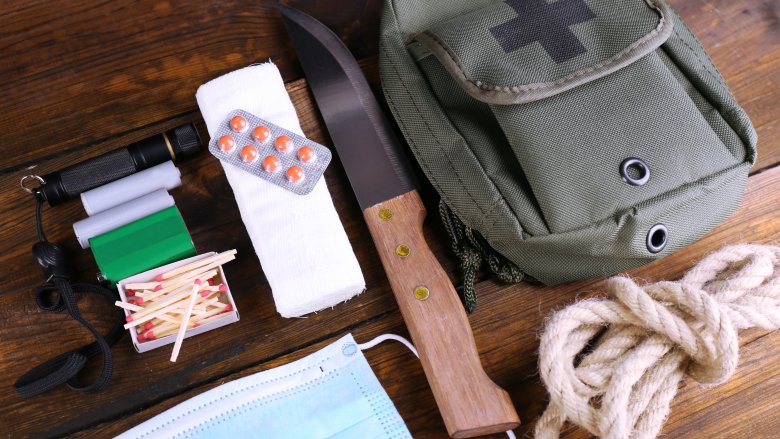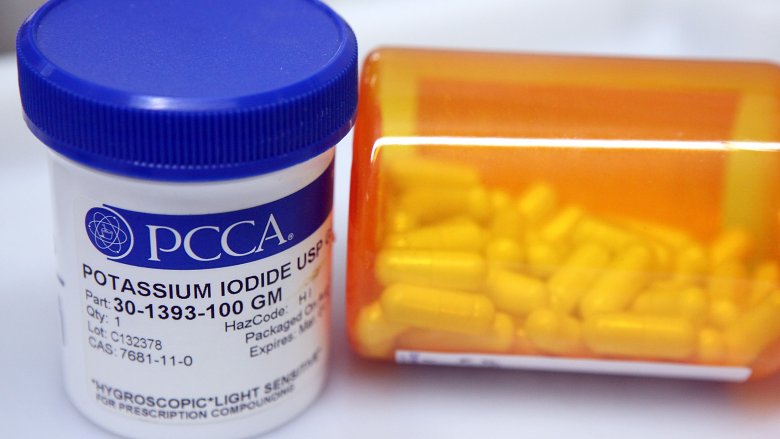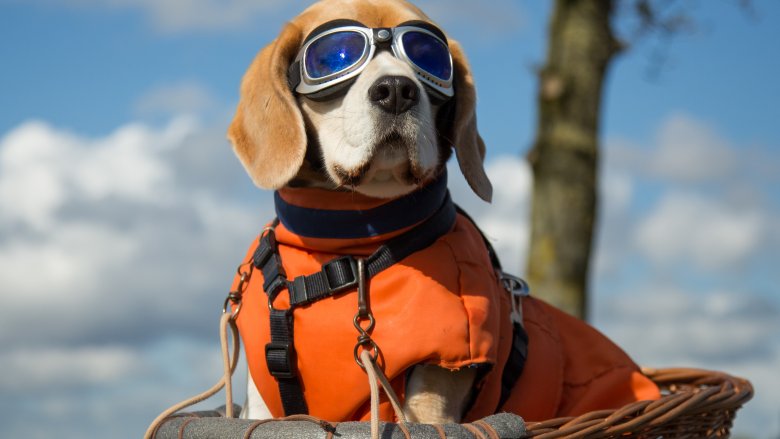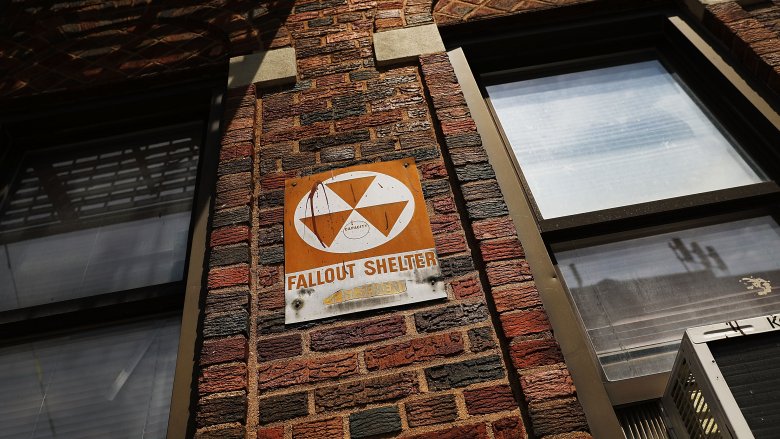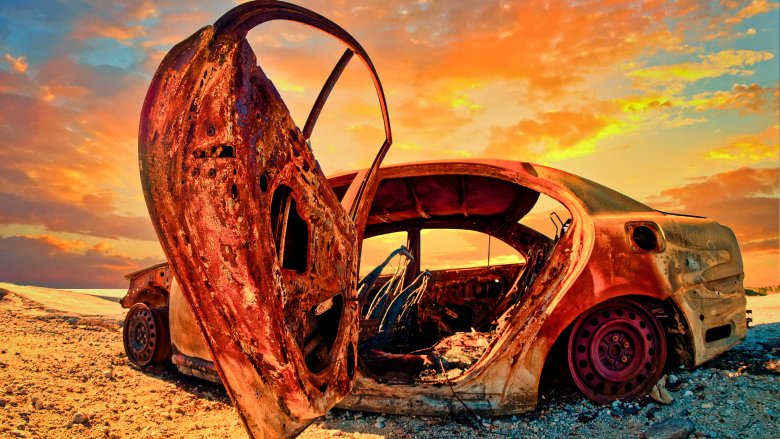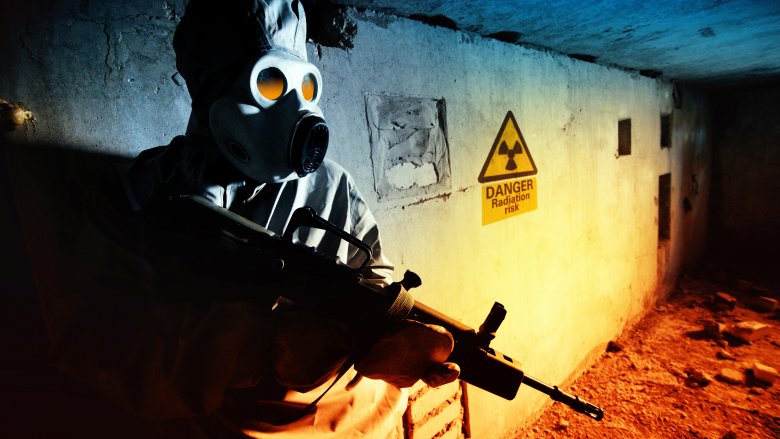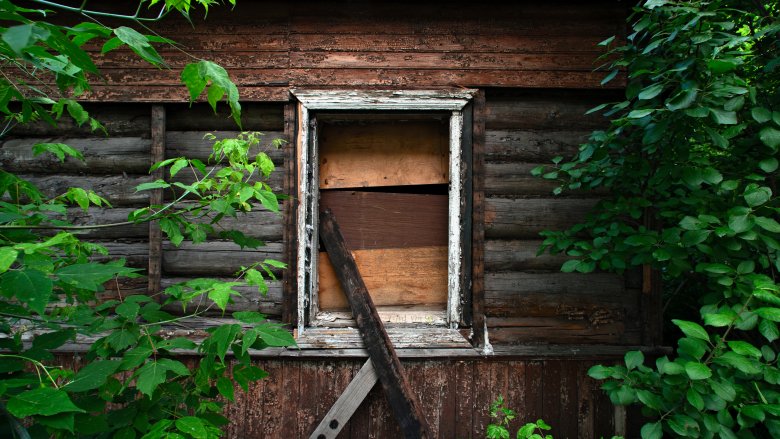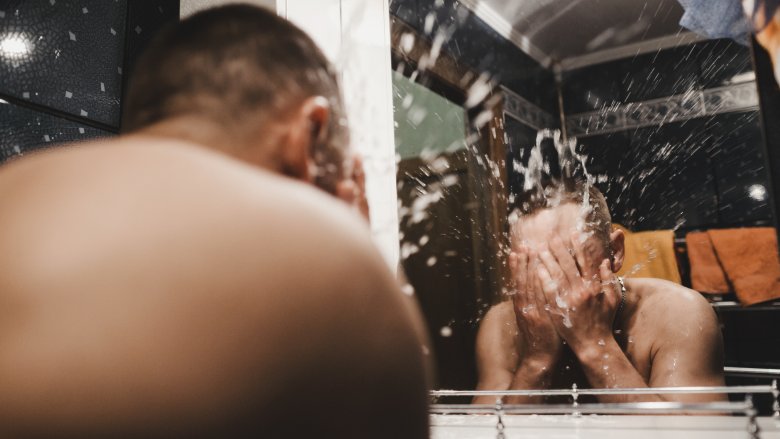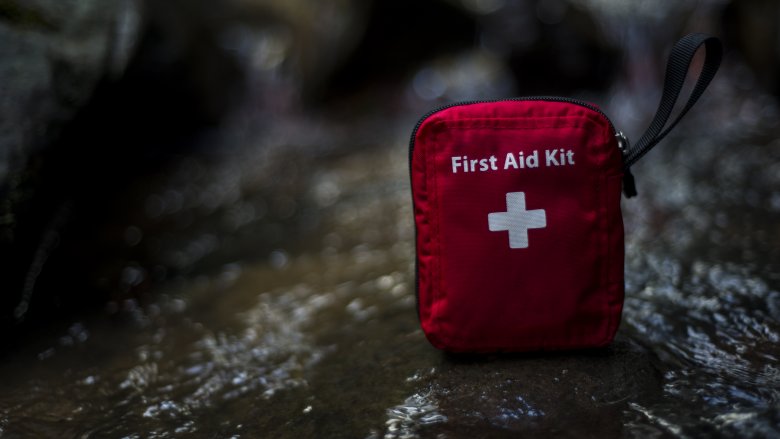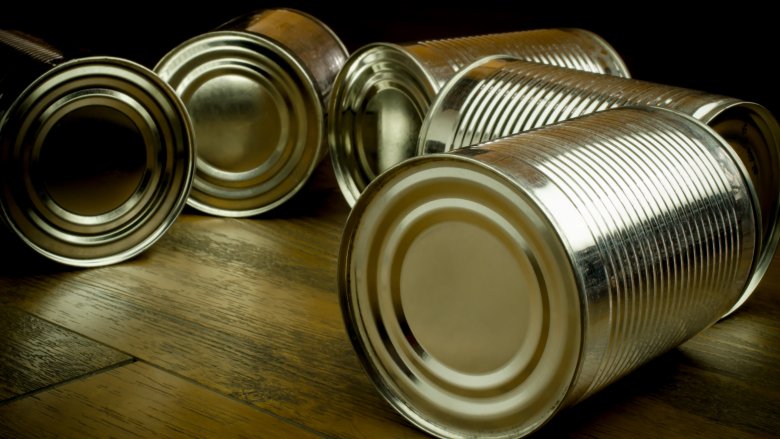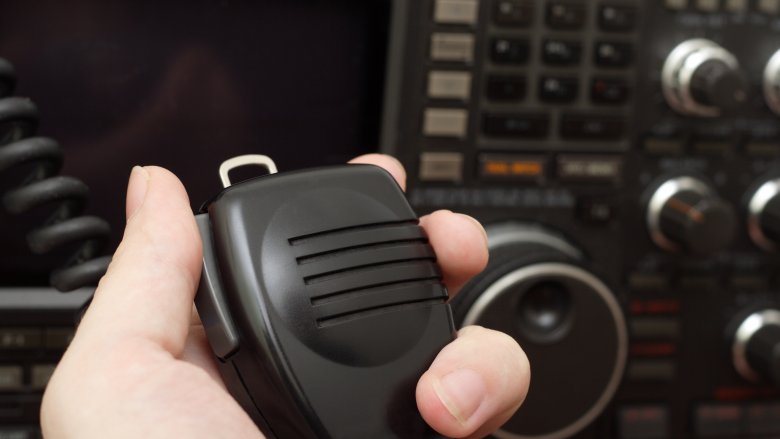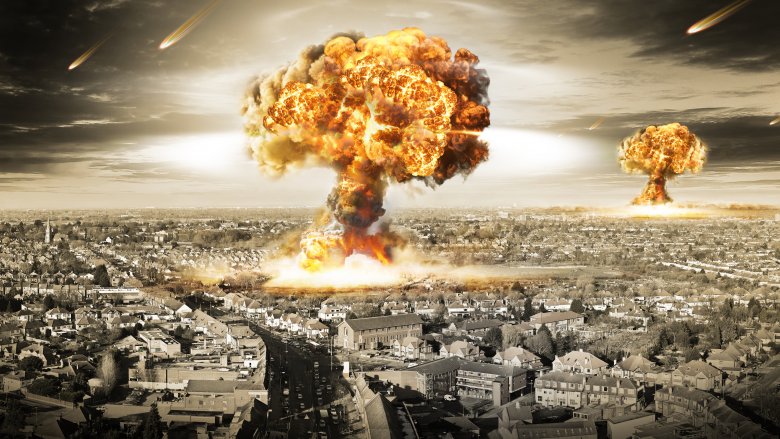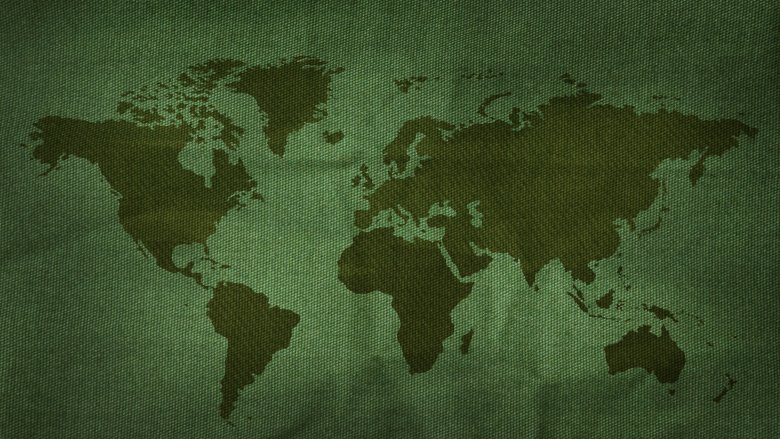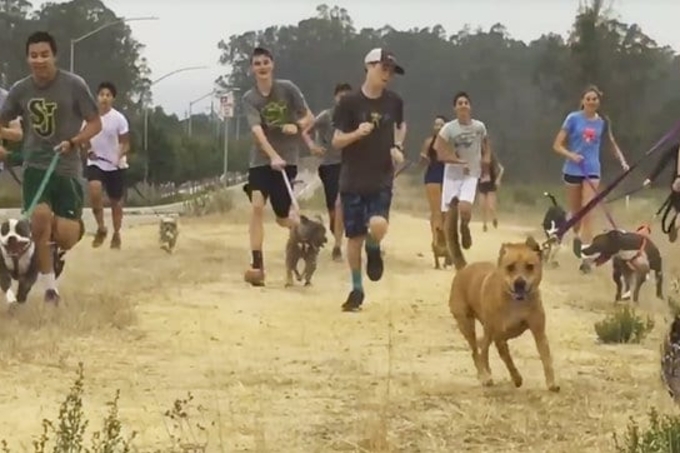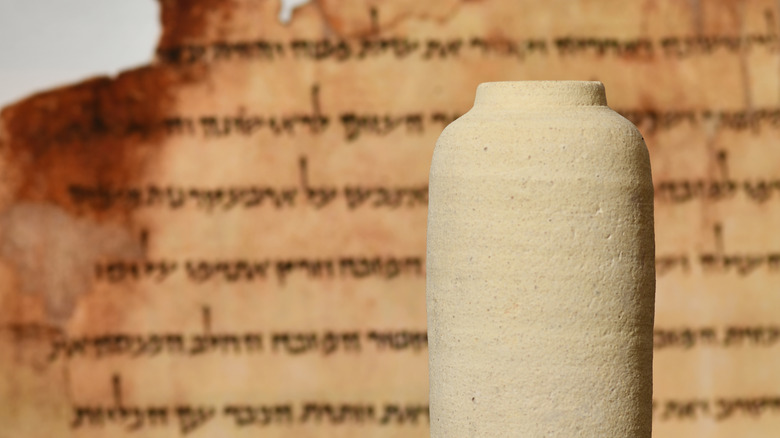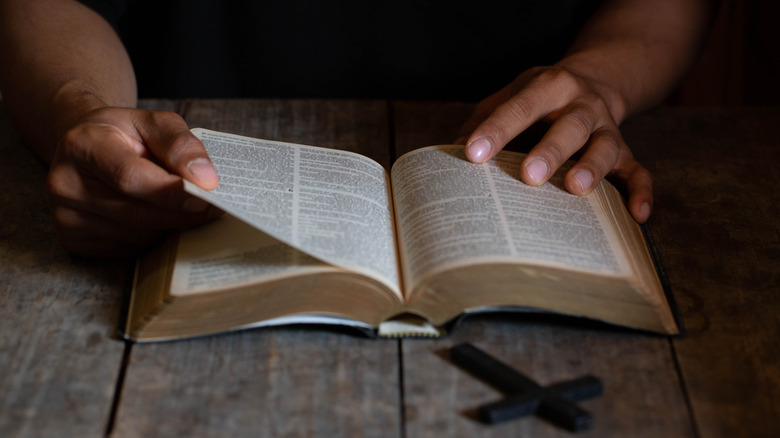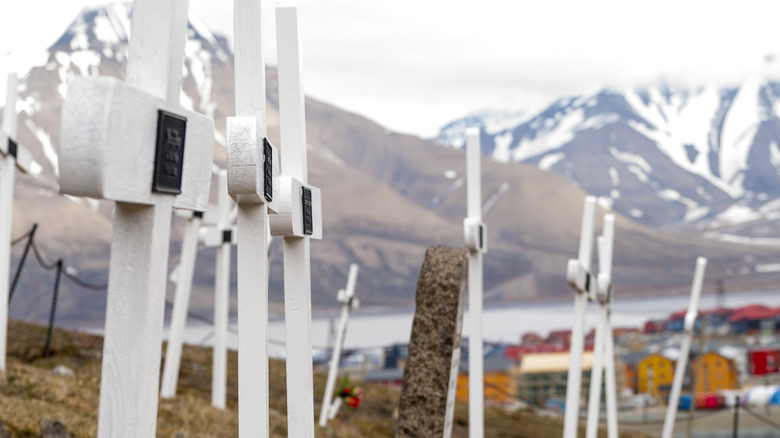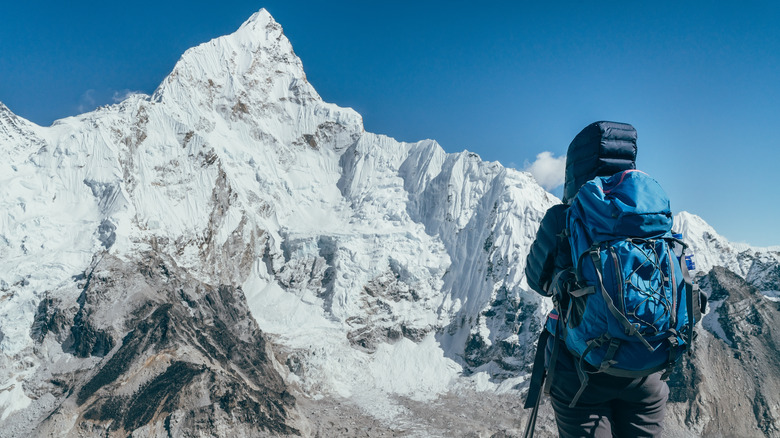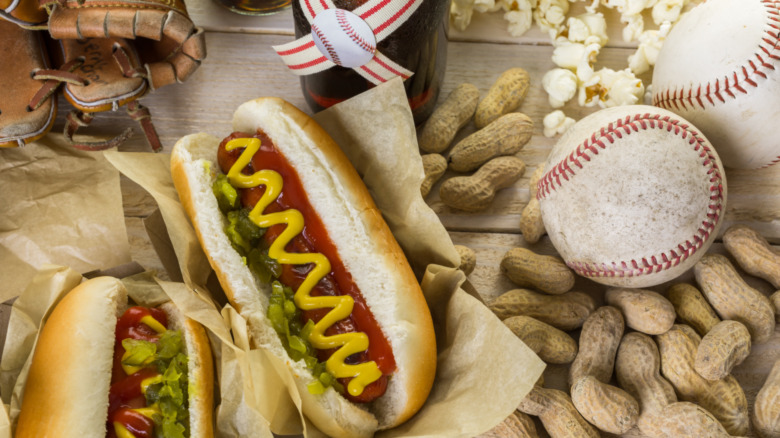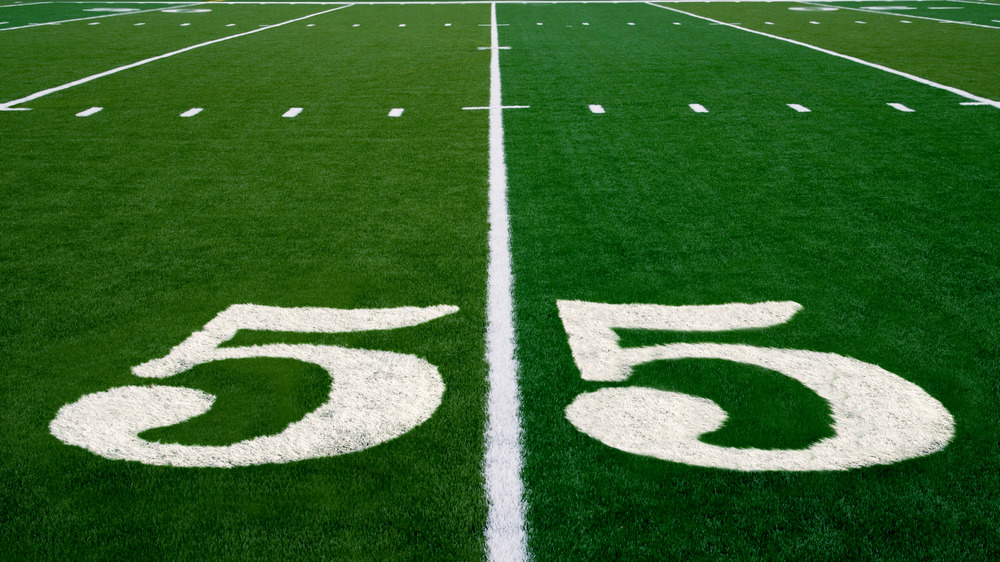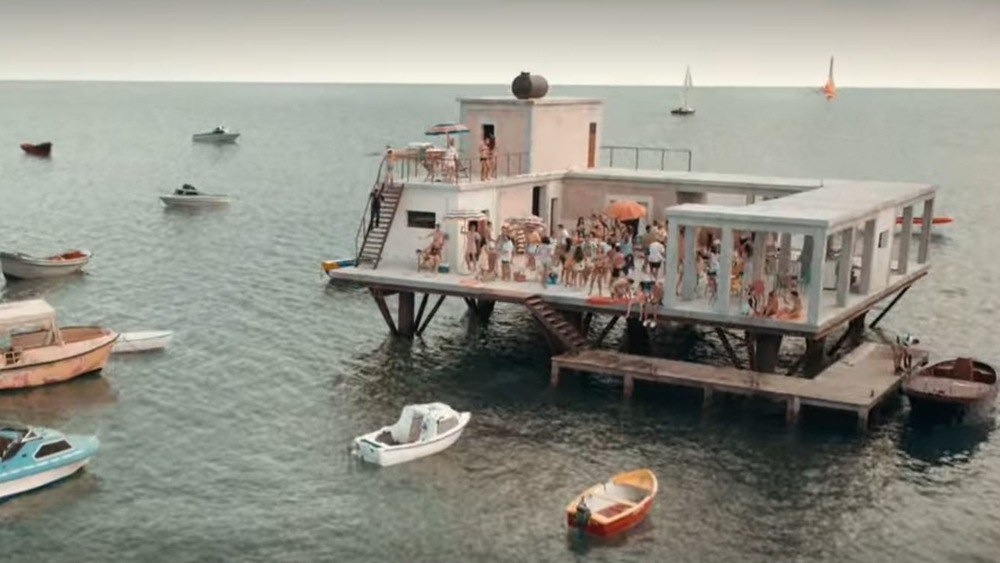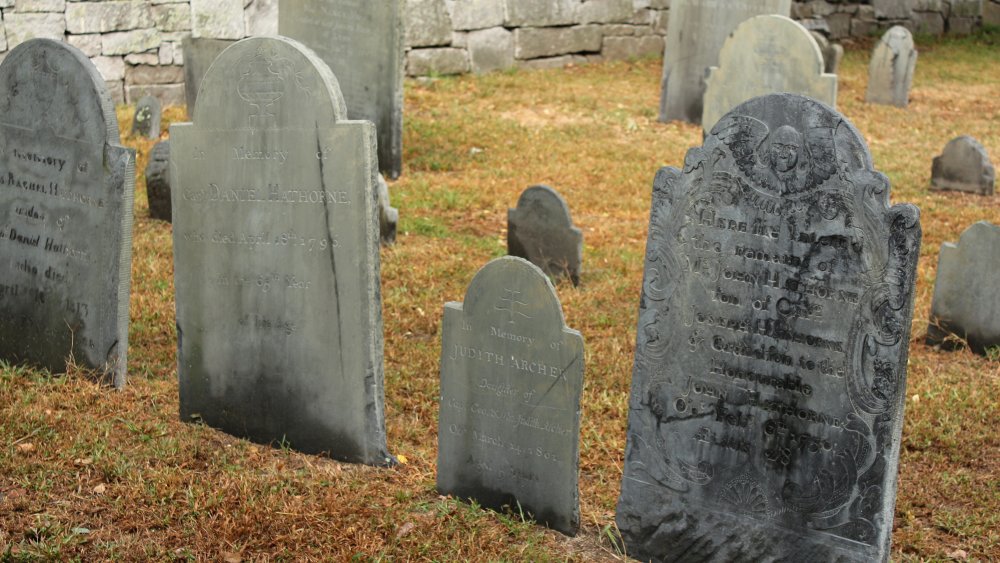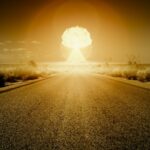
How To Survive A Nuclear Attack
Let’s face it: The news today is pretty bleak. It seems everyone in the world hates everyone else in the world, and the threat of nuclear war feels nearly as real as it probably did during the Cold War. That’s got everyone understandably concerned. We shouldn’t want to destroy the Earth, not when there are finally new Star Wars movies coming out. On the chance there is a nuclear attack, let’s talk survival. While a lot depends on how far from the blast you are, here’s the optimistic take on how to maximize your chances.
Have a survival kit on hand
The Federal Emergency Management Agency (FEMA) has a list of items you should consider for your emergency kit, and you can probably guess the basics. That’s stuff like non-perishable food, flashlights, batteries, and a first aid kit, along with any specifics your family needs, like prescription medications and extra glasses or contact lenses. Those are all great things for any emergency, but if you’re worried about nuclear attack, Heavy suggests some other products you might want to consider adding.
Water is going to be a major concern, so you want to invest in something that’s going to purify radiation from your drinking water. One option is the LifeStraw Personal Water Filter, but do your research and compare it with your other options. You also want to consider high-calorie, military-grade ration packs instead of the standard, non-perishable foodstuffs off your grocery store shelf, and perhaps some stackable, airtight food and water storage containers. A set of walkie-talkies can be invaluable, and you’ll also need to pick up a few books on first aid and survival medicine because you won’t be able to Google matters of life and death.
If you don’t have a survival kit assembled by the time the nukes hit, you’re going to have to make do with what you can grab. Make that stuff specific to your family — like prescriptions — because you’re not going to find it anywhere else.
The importance of potassium iodide
A vital part of your emergency survival kit is going to be preparing for medical emergencies, and while you should have things like a first aid kit, basic and prescription medicines, and hygiene products, that’s not all you’re going to need in a nuclear emergency. Let’s talk potassium iodide, or KI.
First, the Centers for Disease Control and Prevention (CDC) says there are health risks involved in taking KI, and you should only do it under professional guidance. But … we’re imagining a nuclear emergency here. If you can find a doctor to consult, great! If not, know that KI helps prevent the body from absorbing radioactive iodine into the thyroid, and that’s important. Taking a dose of this stuff will essentially fill your thyroid with stable iodine and block the radioactive stuff, and it’s highly recommended for children, adults between 18 and 40, and pregnant or breastfeeding women. It gets trickier with adults over 40 and infants because there’s an increased risk for thyroid damage. One dose will set you up for 24 hours, and this is both important and potentially dangerous. Have FDA-approved tablets or liquid on hand, but don’t just pop some in your gob without knowing exactly how much each family member should take. If you’re really worried, maybe consult with a doctor before the nuke hits.
Make sure your pets are prepared, too
Since no one wants to say an early goodbye to our furry friends, let’s talk pet preparedness. Whatever instructions you’re given for staying inside and sheltering applies to your pets, too. Having an emergency kit for them is going to make all the difference, and FEMA says you should have things like a carrier, back-up harnesses, leashes, collars, and tags, along with copies of vet records, vaccinations, and registrations. Have some toys, beds, and blankets at the ready because your furry friend is going to be more scared than you are. Dogs aren’t going to be going outside to do their business, so have newspapers, paper towels, and disinfectant, along with litter and a box for cats. It’s a good idea to have some photos of you and your pet together, too, in case you ever need to prove ownership. (Or “best friendship.”)
The CDC says you’re going to need to take extra precautions if your pet was outside when the nukes hit. Put on your dust mask, then give your pet a good wash with soap or shampoo. Rinse completely, and pay attention to any cuts or injuries. They’re the perfect place for radioactive dust to enter, so keep them covered.
Choose a good structure and then get inside it
At this point, we’re assuming you’ve already survived the initial hit. Good job! Now you need to find shelter, and this might be one of the most important decisions you make. Radiation expert Brooke Buddemeier of the Lawrence Livermore National Laboratory knows what to look for. After a nuclear blast, you’ll need to be concerned about a few things: golf-ball sized clumps of radioactive dirt and debris, sand-sized particles, and smaller particles carried by the wind at speeds around 100 miles an hour. Buddemeier says you should go inside to get away from all of these, and chances are your home isn’t going to cut it. Even a residential basement only gives protection he rates as “adequate.”
Where you really want to go (aside from a fallout shelter) is the basement of a building that has at least three floors above-ground. Just remember this message from the CDC: Your ultimate goal is to put as much soil, concrete, brick, and walls between you and the outside’s radioactive air.
Stay there for at least 12 and preferably 24 hours. That’s enough time for the radioisotopes to decay — a lot. That’s a good thing.
Don't take shelter in your car
We’ve all seen the movies, and we can all admit the desire to hop in the car and get out of Dodge as fast as humanly possible is a classic, knee-jerk reaction. But radiation expert Brooke Buddemeier says that’ll get you killed for a few different reasons.
First, cars make terrible shelter from nuclear fallout, especially our modern, flimsy, plastic cars. Glass isn’t going to help you at all, and your car isn’t exactly airtight. Just try driving it into water and see what happens. (Don’t try that. You’ve seen enough TV to know what happens.) The biggest danger comes from the radiation in particles the size of sand, and those are going to get into your car and turn it into a sort of microwave for humans.
Also, Buddemeier says you can forget any ideas you have about outrunning the blast. Fallout travels along at 100 mph, and even if you make it to a freeway, you won’t be going anywhere near that fast. In fact, you probably won’t be going anywhere at all. The roads are going to be filled with people trying to run, too, along with debris, accidents, and obstacles. It’s not long before those obstacles are going to include people frying in their cars, so don’t be one of those people.
Don't try to go anywhere or find your family
This one’s going to be a tough pill to swallow, but it’s important. Brooke Buddemeier says when he did an informal survey of how people thought they were going to survive a nuclear attack, he found most believed getting out of the danger zone was the way to go. He says that’s the complete opposite of what you should do, and we’re not just talking about trying to drive out of town.
Look at it this way. The Bulletin of the Atomic Scientists (via NBC News) says the largest possible nuclear attacks we could imagine include some terrifying stuff. We’re talking about a fireball that’s a mile in diameter and as hot as the surface of the Sun, and hurricane-force winds right after that. Your Prius isn’t going to protect you from that, and if everyone tries to go somewhere, that’s just going to make things worse. Unfortunately, that means resisting the urge to go find your family. Leave the big kids at school, leave the little kids at daycare, and leave your significant other at home or at work. It’s one of the hardest decisions you might have to make, but experts say it’s the right one.
If you're caught outside, you still have a fighting chance
If things go really, really sideways, you might not have much of a warning. It’s entirely possible your survival will be down to luck, and if you’re outside, you’re going to have it a lot harder. But there are a few things you can do to maximize your chances.
Ready.gov says the first thing is not to look at the fireball. You’ll be blind, and that’s not going to help you. If you’re still alive, you’re far enough away that you’ll have a handful of seconds to take any kind of cover that’s around, putting it between you and the blast. Lie on the ground face down and cover your head. Once the blast wave passes you and the winds dissipate, find shelter.
And there’s the weird thing. Being outside is the worst place you can possibly be, but according to Irwin Redlener of Columbia University’s National Center for Disaster Preparedness (via Time), you’ll actually have some valuable time if you make it to this point. Between the initial blast and the time those radioactive particles start settling to the ground, you have around 15 to 20 minutes. Use that time to find shelter, and stay there.
Make your indoor shelter as safe as you can
So, you made it into your shelter. Congratulations! Pat yourself on the back, but you’re not done yet. According to the CDC, once you’re safely inside, there are some other things you can do that’ll make a huge difference in your survival and your future. You’re going to want to keep as much of the radioactivity as possible outside, so take steps to do so. Close and seal any vents, turn off air conditioning and heating units, and don’t forget about the fireplace. Block that, too.
Ideally, your shelter shouldn’t have any windows. If it does, the CDC recommends using heavy plastic and duct tape to seal them. Your goal is to make your room as airtight as possible while the worst of the radiation is settling, and that’s going to be a couple of hours. If you do actually make it airtight, you’ll have to remove all that plastic after a few hours so you don’t suffocate, but the worst of the radiation should have settled by then.
Get the radioactive dust off you
If you were caught outside or exposed to any radioactive air, you’ll need to completely decontaminate yourself. It’s strangely easy, and Dr. Eric Toner from the University of Pittsburgh’s Center for Biosecurity (via NPR) says you’re about 95 percent of the way there if you just take off your clothes and take a shower.
That’s because most of the radiation is in the form of dust, and you’re essentially just washing it off. The best scenario is having clean clothes, but if you have no choice you should be able to wash your clothes and put the same ones back on. Toner says even washing in rainwater will work because even though water, rain, and runoff will be radioactive, it’ll be so diluted it will get rid of the dust with minimal risk.
There’s a catch. You should be using soap and shampoo, but radiation expert Andrew Karam (via NPR) says it’s vitally important not to use conditioner. Think of those commercials that show magnified sections of damaged hair. It looks scaly, right? Conditioner is designed to bind those scales, and when it does, it’s going to bind radioactive particles, too. So skip the conditioner. You’ve probably got other things to worry about, anyway.
Be prepared to treat radiation burns
Chances are pretty good that the people you’re sheltering with aren’t going to make it to safety unharmed, so you need to be ready for that. It’s always a good idea to know some basic first aid to get you by until emergency workers show up, and in the case of a nuclear attack, you should also know how to deal with radiation burns.
According to Calgary First Aid, radiation burns are categorized like any other burns, and the good news is first-degree burns require minimal treatment. Second-degree burns and up are worse, though, and range from blisters to blackened, charred skin. That’s going to require some professional help, but you can help in the meantime by managing pain with over-the-counter pain meds, burn ointment, and cool compresses.
Know basic water and food safety
You’re safe, you’re sealed inside, and you’re decontaminated. You’re not going anywhere for a while, so you should know some basic food and water safety. We’ll start with food, and the CDC says before you prep anything, you should wipe off all surfaces, cans, and utensils with a damp cloth. That goes for your pets’ dishes, too, and once you’re done put the cloth in a sealed, out-of-the-way container. Then, eat up. It’s not just food in cans and emergency rations that are safe; anything in your fridge, freezer, pantry, cabinets, or drawers should be safe, too. Your garden, however, is not, and you shouldn’t be going outside anyway.
Water is a little trickier. The CDC says the drinks in sealed containers are safe, and if you’re in a bind, the water in your hot water tank and your toilet tank is also safe. (No one will judge you.) But you also need to know that tap water isn’t going to be safe to drink, and you should only drink from sources you know are safe until a professional tells you differently. You can’t boil radiation away, but you can still use that tap water to wash and decontaminate with. Don’t waste bottled water and other safe sources on a shower — you might need them.
Listen to emergency broadcasts
Staying tuned to emergency services could be harder than you think. It would be unlikely according to Business Insider, but it’s possible an electromagnetic pulse might accompany the nuclear blast, and if that’s the case, it’s going to knock out the electronics you depend on for so much. It’s also possible they’re rendered useless by a disruption of cell towers, or you might have some dead cell phone batteries and no way to recharge them.
That’s why the CDC recommends getting an emergency radio, one powered by a hand crank or by batteries. If you’re in the U.S., there’s another option that’s perfect for emergencies: an NOAA Weather Radio. They’re tuned into the National Weather Service, and they broadcast continuous weather information and messages from the emergency services. (Even better, they can be connected to other services for those who are hearing-impaired.) Since they’re broadcasting the information that triggers other warning systems, they’re a great way to stay tuned to what’s going on outside your emergency shelter.
Be aware that surviving is just the start
If you think you’ll make it through the worst of it, you’ll need to be prepared for the aftermath. It’s impossible to imagine the death and devastation you’re going to see, but if you want an idea of what’s going to happen to your home and your neighbors, read the first-hand accounts of those who survived Hiroshima and Nagasaki.
It’s terrible stuff. Take Junko Morimoto’s account. She was 13 when the bomb exploded over Hiroshima, and she was about a mile from the epicenter. Her home collapsed on her and her family, and when she found her sister she was missing teeth and had a hole in her face where a chopstick had passed through it. She and her family walked through crowds of people with skin blackened and burned, over rivers clogged with the dead. The worst hadn’t come yet.
Yoshitaka Kawamoto was 13, too. In his account (via Time), he talked about trying to save some of his classmates from their collapsed school. He found his friend Ota, but his back was broken, his face was peppered with nails, and one of his eyes was not in the right place. He died a moment later.
Be prepared. Surviving a nuclear blast is one thing. Living after it is another.
Check the Nukemap
So should you worry? It depends on where you live. Big cities and highly populated areas are obviously more likely to be targeted, and if you’re curious to see just what would happen if cities near you were at the center of a nuclear attack, check out the Nukemap.
It’s hosted by the Stevens Institute of Technology and lets you digitally “detonate” a nuke over any point in the world. You can adjust the size of the nuke, and see what kind of devastation it might bring. That includes things like fallout patterns and casualty maps. It’s a sobering look at just what might happen, and when you can see the street names, the fallout patterns, and the insane numbers of innocent people killed … it says a lot for preparedness.
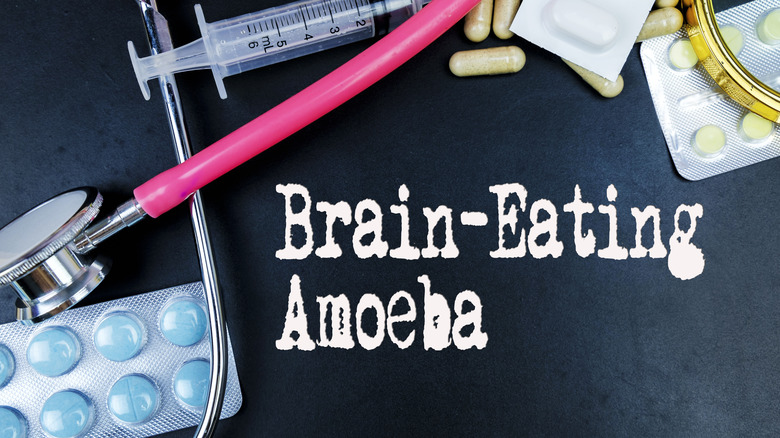
The Weird Truth About Naegleria Fowleri, The Brain-Eating Amoeba
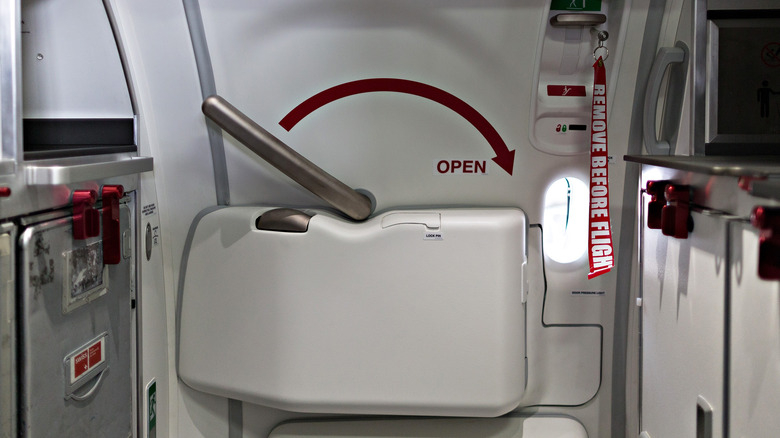
What Really Happens If You Try To Open A Plane Door Mid-Flight?
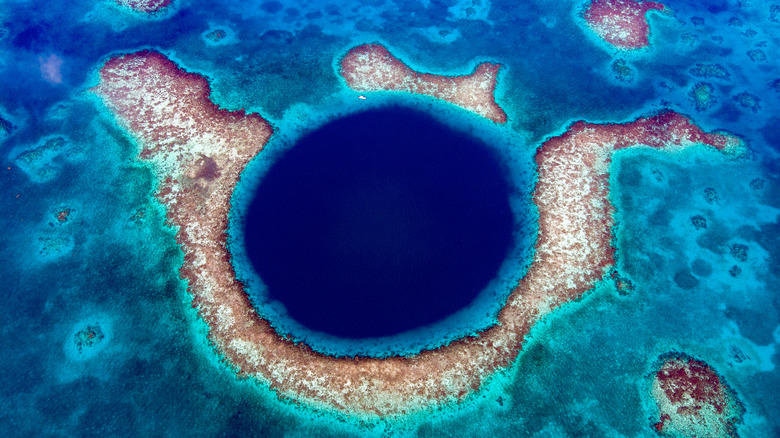
The Mystery Of Belize's Beautiful Great Blue Hole

Frederic Bourdin: The Crazy True Story Of A Serial Impostor
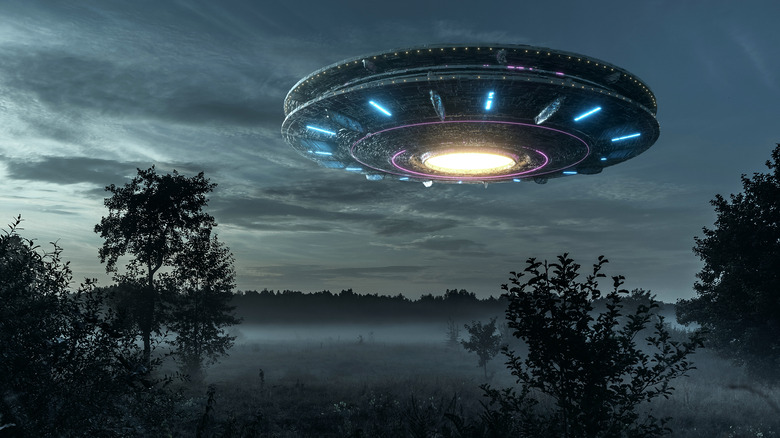
Here's How The Catholic Church Feels About The Possibility Of Aliens
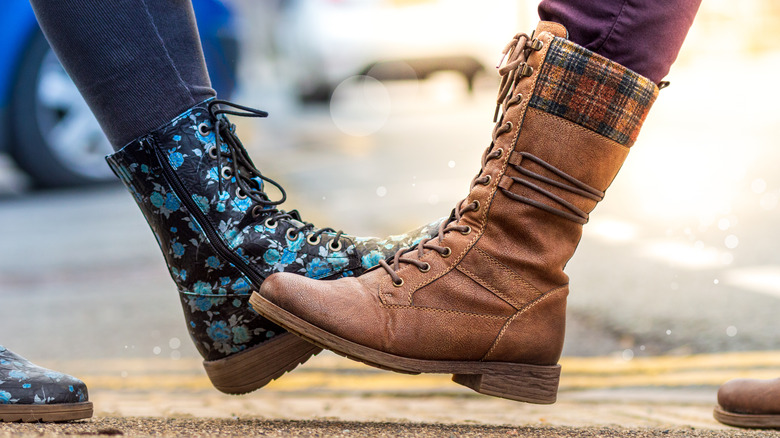
Competitive Walking Was Once The Biggest Sport In The World
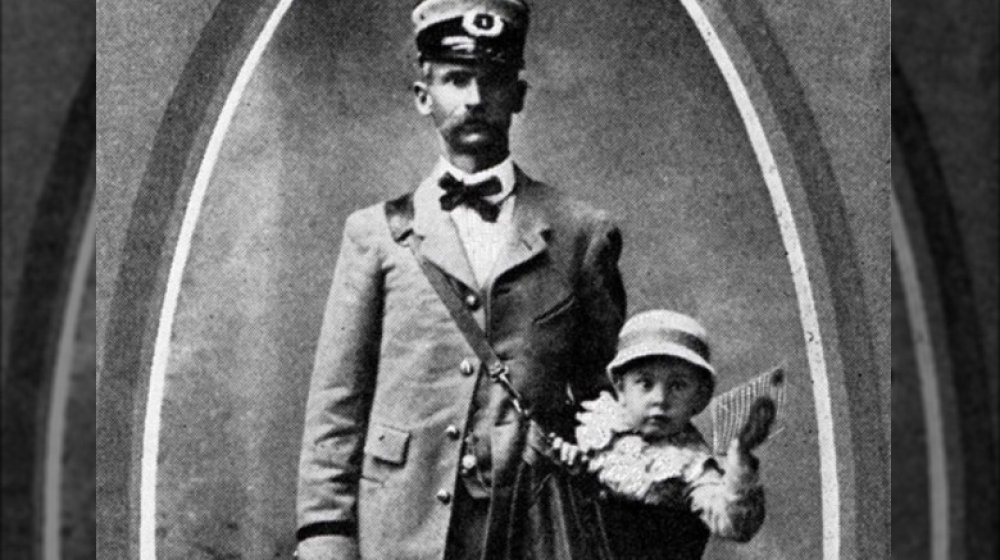
Forget The Stork: Mailmen Used To Deliver Babies As Packages

Hotel Hiring 'Fur Butler' Pays You To Chill With Bernese Mountain Dog

What Animals Eat Snakes?
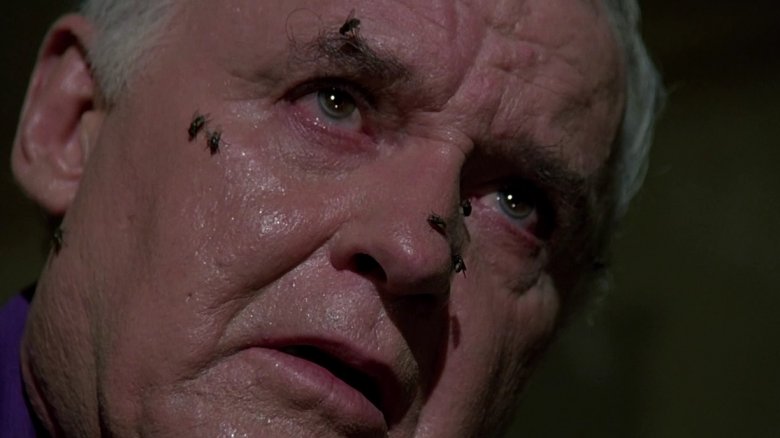
The Untold Truth Of The Amityville Horror
